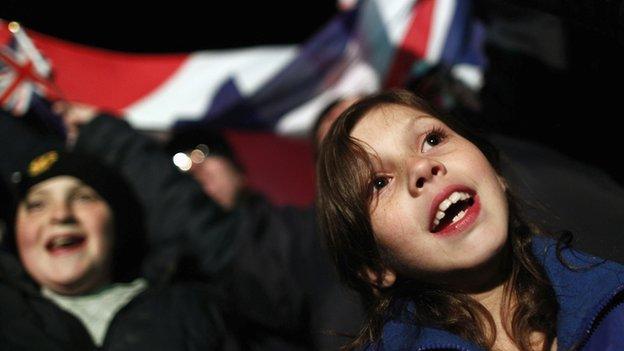The Falklands War: 40th Anniversary of the South Atlantic conflict
- Published
- comments
The Falklands War: 40th Anniversary of the South Atlantic conflict
The Falkland Islands are known as a 'British Overseas Territory' - a self-governing group of islands in the South Atlantic Ocean, which has the Queen as its Head of State.
The UK government takes responsibility for its defence, and its people, the majority of whom are native born Falklanders, of British descent.
Although the islands are very far away the territory has been under British rule since 1833.
Though the vast majority of islanders see themselves and their islands as British, this has long been disputed by Argentina, which maintains its claim to them instead.
The country believes the islands rightfully belong to it.
So, 40 years ago the islands were invaded by Argentinian forces - keen to take the archipelago back from Britain.
An expanse of water with scattered islands, or a chain of islands in a group.
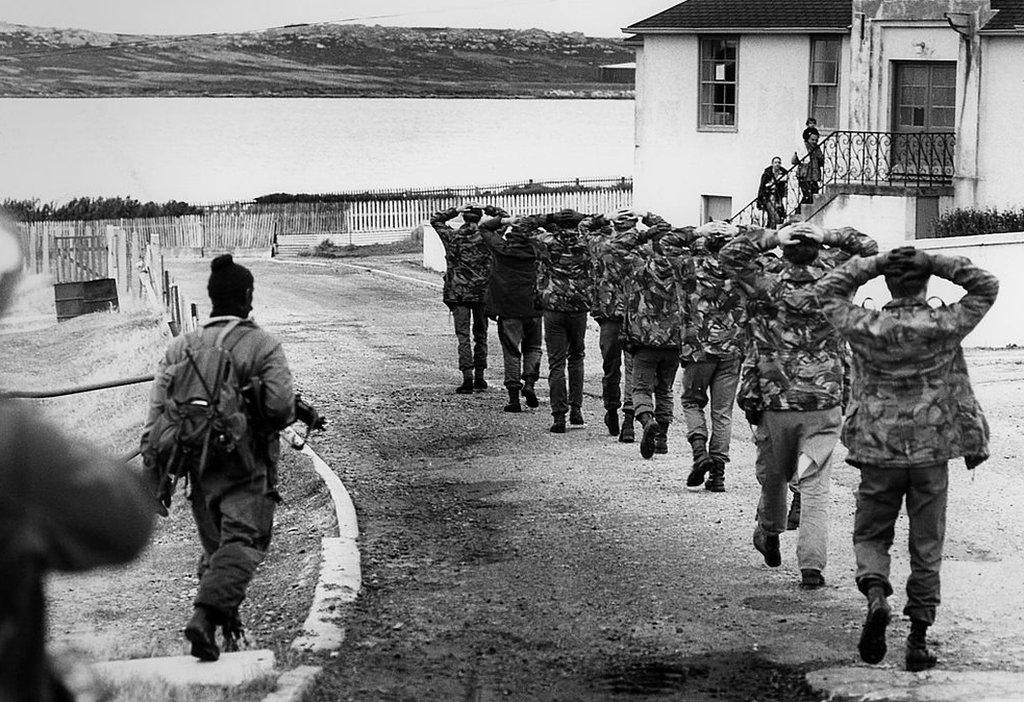
British soldiers surrender to Argentine troops who invaded the islands on April 2, 1982 in Port Stanley, Falkland Islands
The Falkland Invasion
On 2nd April 1982, Argentinian forces swept on to the Falkland Islands. Taking control of its government buildings, capturing surprised British forces and enforcing their will on the local population, within just a few hours Argentina's flag flew high upon the buildings in the capital, Stanley.
Argentina now controlled it, and everyone that lived there.
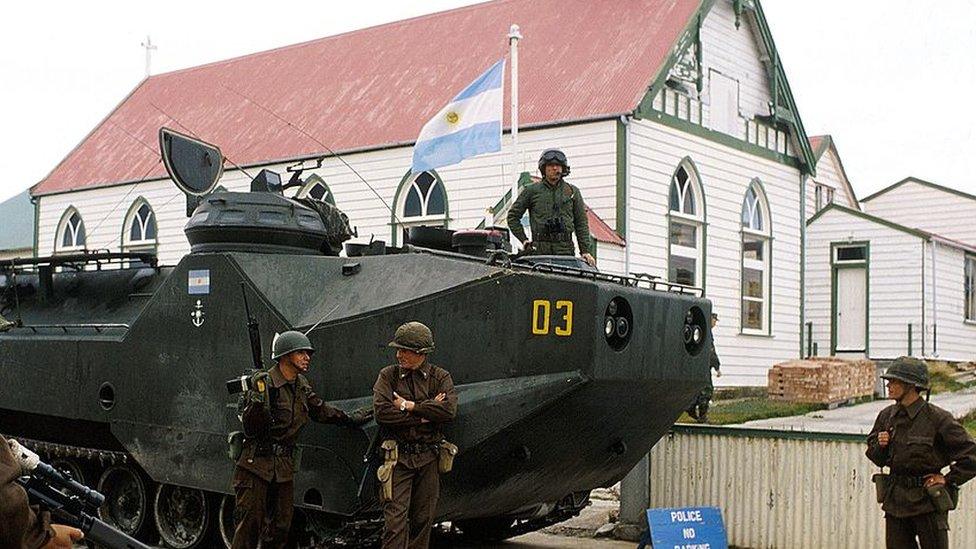
Argentinian troops capture the capital, Stanley
Its rulers believed that Britain did not have the will, the strength or determination to attempt to regain the Falklands by force.
They were to be proved wrong.
Around 8,000 miles away in Britain, the Prime Minister Margaret Thatcher announced in Parliament that a Task Force of more than 100 ships from the Royal Navy would be sent to recapture the islands.
A fleet of war and merchant ships set off from Britain, including two aircraft carriers - equipped with fighter jets, helicopters and troops.
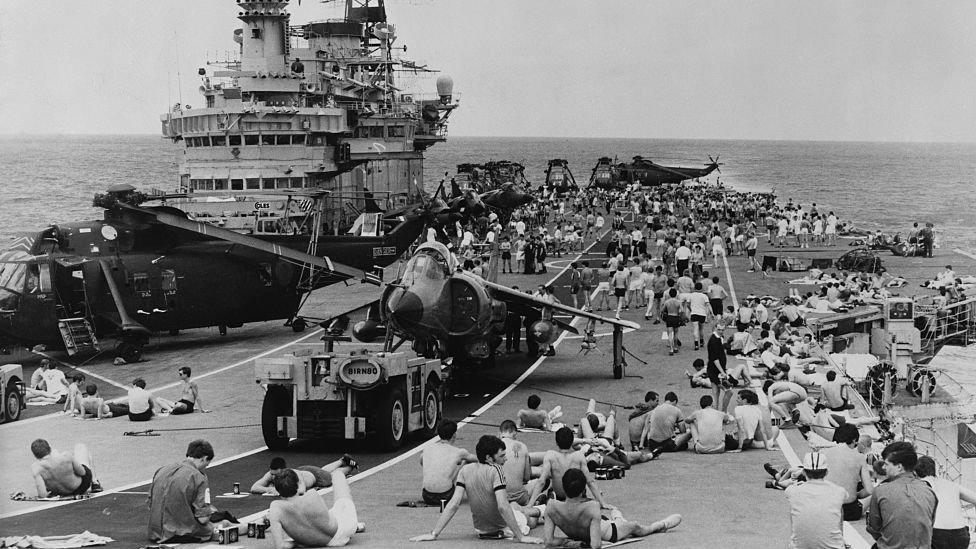
Royal Navy crewmen of the HMS Hermes aircraft carrier relax on the flight deck as more than 100 ships headed towards the Argentine-occupied Falkland Islands.
It was a difficult, long and stormy journey. As the fleet closed in on the Falklands, ships were faced with the constant danger of coming into range of enemy aircraft.
A key, but controversial incident took place on 2nd May, when the Argentine ship 'General Belgrano' was sunk outside the war zone by a British submarine, HMS Conqueror.
There was this massive cheer... but then afterwards there was that deathly silence when we knew that this was serious... and we knew that people had lost their lives.
Sinking a ship outside a war zone was not seen to be 'playing by the rules' and many lives were lost.
However the effect that it had forced the Argentinian forces, afraid of losing any more ships, to keep most of their others in port, limiting its fighting strength to its air force.
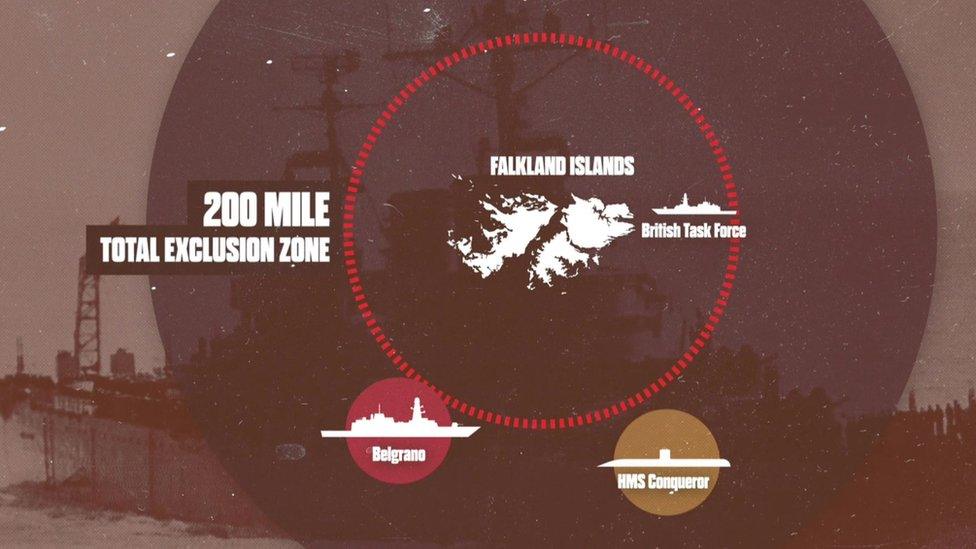
The 200 mile exclusion zone around the Falklands marked a clear 'warzone' - but the sinking of the Belgrano took place outside this zone, which was very controversial.
Following several weeks at sea it was only a matter of time before the British suffered their own casualties.
Just two days after the sinking of the Belgrano, HMS Sheffield was badly damaged by a bomb and later sank.
Over the course of the conflict, HMS Ardent, Antelope and Coventry were also sunk by Argentinian firepower. Many others suffered serious damage.

Landing craft storm the beaches carrying British troops
Nevertheless, on the 21 May 1982 - 6 weeks after the Argentine invasion - British forces landed on the beaches and a series of battles took place over the coming days and weeks as they fought their way through stiff enemy resistance.
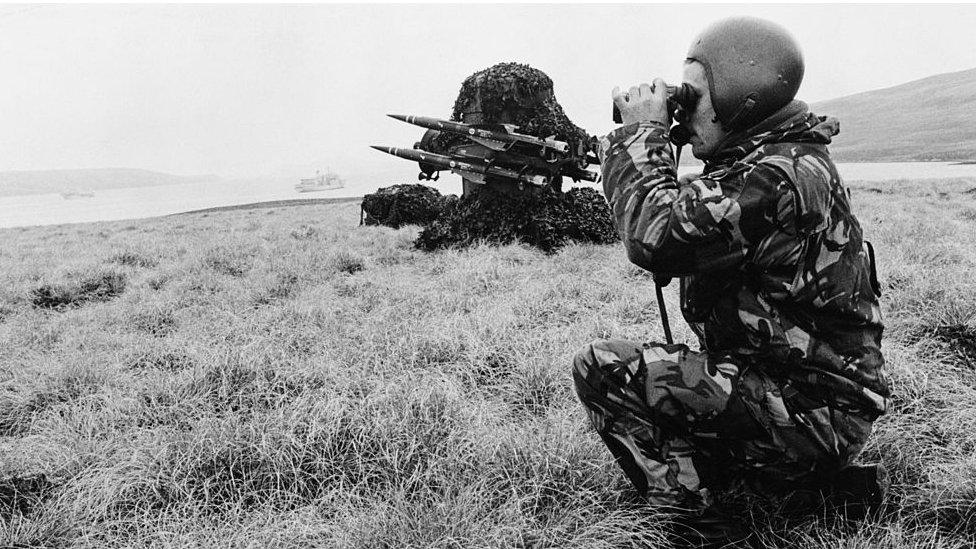
A surface to air missile battery operator defending Task Force ships keeps watch for Argentine aircraft
However it was not to last for long. Well trained and better equipped, British troops soon freed the islands' capital Stanley, and by 14 June the fighting was at an end.
Argentina's troops surrendered and the Union flag was raised above the government buildings in the capital again.
...was it right to fight that grim battle down in the South Atlantic?... I will be asked that question many times more... But the answer will always be, yes.
The Falklands War was over, but as with all conflicts it came at a cost. There were 255 British casualties, along with 3 islanders.
649 Argentinian troops were also killed.
But the 74 day war - the largest of its kind since World War Two - was at its end. Britain achieved its aim and the fleet returned home to a heroes welcome.
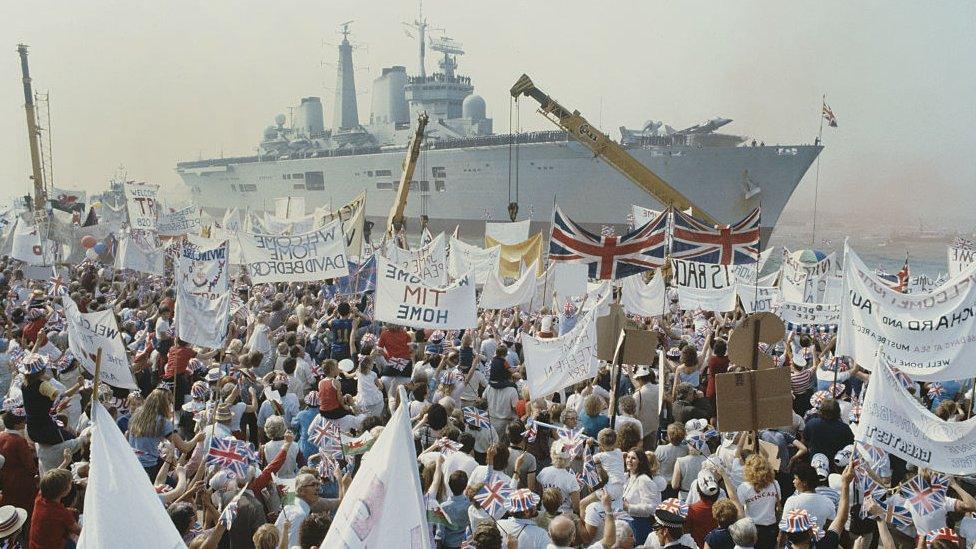
The Royal Navy's aircraft carrier, HMS Invincible returns to Portsmouth harbour from the South Atlantic to mass celebrations on the quayside
The Future of the Falklands
The Royal Navy still defends the Islands and a military base remains there. However Argentina still maintains its claim.
It remains clear that, although Britain and Argentina may have somewhat better relations now compared to back then, the sovereignty of the Falkland islands - in other words - which country it belongs to, still remains an issue.
Ongoing tension between the two countries about who owns the land led to a vote in 2013, where the islanders could decide on their own future.
The results showed 1,513 votes were in favour of the Falklands remaining a British Overseas Territory and three votes were against.
Britain continues to maintain a military presence on the Falklands and the Ministry of Defence says it will do so "for as long as the islanders wish them to".
- Published2 April 2022
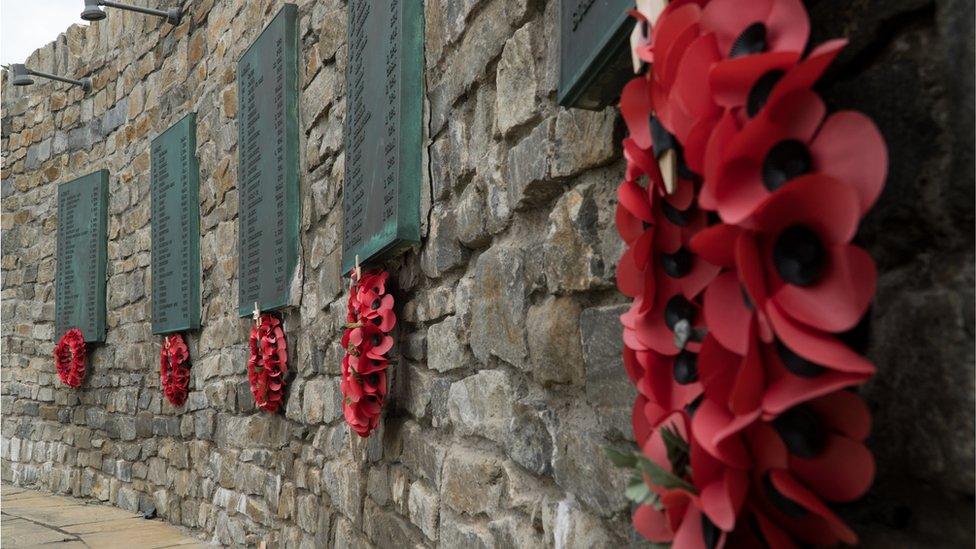
- Published12 March 2013
